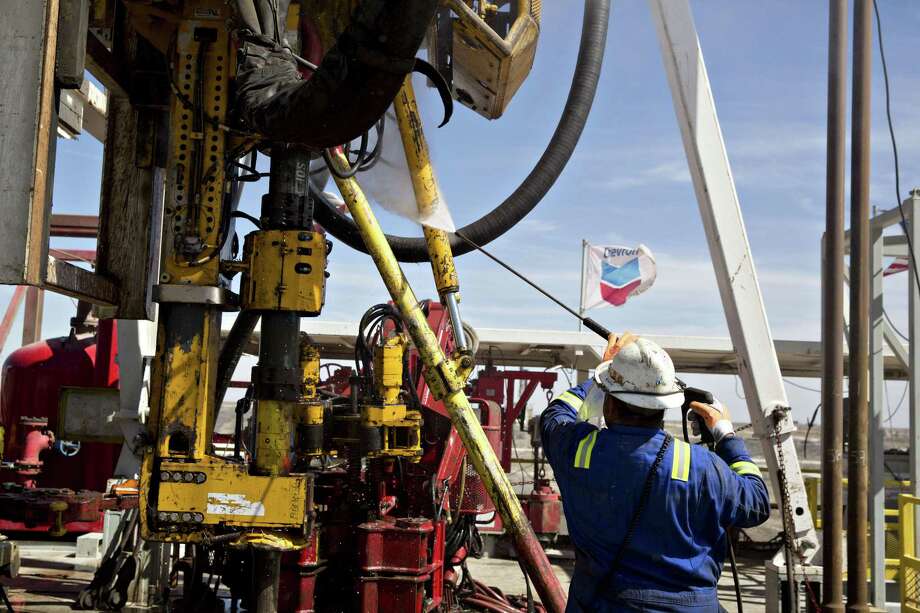This topic contains 6 replies, has 7 voices, and was last updated by ![]() bigboy83 1 year, 8 months ago.
bigboy83 1 year, 8 months ago.
- AuthorPosts
The US Shale Oil Ponzi Scheme Explained Or How Wall Street Enabled the Fracking ‘Revolution’ That’s Losing Billions

Introduction [10][11][12]
With the exception of airlines, Chinese state enterprises and Silicon Valley unicorns—private firms valued at more than $1bn — shale firms are on an unparalleled money-losing streak. About $11bn was torched in the latest quarter of 2018 , as capital expenditures exceeded cashflows. The cash-burn rate may well rise again this year.
Hydraulic fracturing (also fracking, fraccing, frac’ing, hydrofracturing or hydrofracking) is a well stimulation technique in which rock is fractured by a pressurized liquid. The process involves the high-pressure injection of ‘fracking fluid’ (primarily water, containing sand or other proppants suspended with the aid of thickening agents) into a wellbore to create cracks in the deep-rock formations through which natural gas, petroleum, and brine will flow more freely. When the hydraulic pressure is removed from the well, small grains of hydraulic fracturing proppants (either sand or aluminium oxide) hold the fractures open
American frackers are cranking out crude oil in Texas, North Dakota and Colorado even faster, defying overseas rivals who have limited production to support oil prices.
The US Energy Department projected U.S. shale drillers will produce an additional 131,000 barrels a day to push output from the nation’s seven major shale plays to nearly 7 million barrels a day by April. The bulk of the increased production will come from the Permian Basin and the Eagle Ford Shale in Texas.
The forecast comes a week after the International Energy Agency, a Paris-based group that advises oil-importing countries, told energy executives in Houston that the United States will produce enough crude to satisfy 60 percent of global demand growth over the next five years.
It’s part of the second U.S. oil boom in a decade that could force OPEC and Russia to continue extend their Vienna alliance, a name analysts recently coined for the pact between the Organization of Petroleum Exporting Nations and other major producers led by Russian. The agreement, reached in Vienna where OPEC holds its semi-annual meetings, committed the participants to cumulative output cuts of 1.8 million barrels a day in an effort to elevate crude prices after a two-year downturn led to thousands of job cuts and scores of bankruptcies in Houston, the U.S. energy capital.

The US Shale Oil Ponzi Scheme Explained
SRSRocco
The SRSRocco Report [1]Few Americans realize that the U.S. economy is being propped up by the Shale Oil Industry. However, the shale oil industry is nothing more than a Ponzi Scheme, so when it collapses, it will take down the U.S. economy with it. Unfortunately, the reason few Americans understand how lousy the economics are in producing shale oil and gas is due to the misinformation and propaganda being put out by the industry and energy analysts.
I am quite surprised how bank analysts and brokerage firms can continue to fund the shale oil and gas or advise clients to purchase stock when the industry is behaving just like the Bernie Madoff Ponzi Scheme. The only big difference is that the U.S. Shale Industry is a Ponzi at least four times greater than Madoff’s $65 billion fiasco.
I decided to discuss in detail why the U.S. Shale Oil Industry was a Ponzi Scheme in my newest video. I provide some interesting charts that explain how the huge decline rates and massive debt are going to bring down the industry, much quicker than the market realizes.
The Permian, the largest shale basin in the United States, decline rate was a stunning 60% in just two years. Thus, the companies producing oil in the Permian are forced to spend boatloads of Captial Expenditures (CAPEX) to grow or just maintain production
Furthermore, I explain how many of these shale oil companies are using debt to fund operations. However, lousy shale economics are not allowing these companies to pay back debt, so they must borrow new debt to pay back existing debt. This is the very definition of a Ponzi Scheme. The table below shows how EOG has structured its debt to be repaid over two decades:
How Wall Street Enabled the Fracking ‘Revolution’ That’s Losing Billions
Justin Mikulka
DeSmog Blog
May 11, 2018 [2]The U.S. shale oil industry hailed as a “revolution” has burned through a quarter trillion dollars [3] more than it has brought in over the last decade. It has been a money-losing endeavor of epic proportions.
In September 2016, the financial ratings service Moody’s released a report [4] on U.S. oil companies, many of which were hurting from the massive drop in oil prices. Moody’s found that “the financial toll from the oil bust can only be described as catastrophic,” particularly for small companies that took on huge debt to finance fracking shale formations when oil prices were high.
And even though shale companies still aren’t turning a profit, Wall Street continues to lend the industry [5] more money while touting these companies as good investments. Why would investors do that?
David Einhorn, star hedge fund investor and the founder of Greenlight Capital, has referred to the shale industry as “a joke.” [6]
“A business that burns cash and doesn’t grow isn’t worth anything,” said Einhorn, who often goes against the grain in the financial world.
Aren’t investors supposed to be focused on putting money toward profitable companies? While, in theory, yes, the reality is quite different for industries like shale oil and housing.
If the U.S. financial crisis of 2008 has revealed anything, it is that Wall Street isn’t concerned with making a “s~~~ty deal” when it means profits and bonuses for its traders and executives, despite their roles in the crash.
Wall Street makes money by facilitating deals much like a Vegas bookie makes money by taking bets. As the saying about Las Vegas goes: “The house always wins.” What’s true about casinos and gambling also holds true for Wall Street.
Wall Street caused the 2008 financial crisis, with some of its architects personally benefiting. However, while a few executives profited, the result was a drop in employment of 8.8 million people, and according to Bloomberg News in 2010, “at one point last year [2009] the U.S. had lent, spent, or guaranteed as much as $12.8 trillion to rescue the economy.”
JP Morgan (along with much of Wall Street) required large sums of money in the form of bailouts to survive the fallout from all of the bad loans made, which brought about the housing crisis. Is JP Morgan steering clear of making loans to the shale industry? No. Quite the opposite.
As shown in this chart of which banks are loaning money to shale company EOGResources, while all of the big players in Wall Street are in on the action, JP Morgan has the biggest bet.
To understand why JP Morgan and the rest of these banks would loan money to shale companies that continue to lose it, it’s important to understand the gambling concept of “the vigorish,” or the vig. Merriam-Webster defines vigorish as “a charge taken (as by a bookie or a gambling house) on bets.”
Wall Street makes money by taking a cut of other people’s money. To a gambling house, it doesn’t matter if everyone else is making money or losing it, as long as the house gets its cut (the vig) — or as it’s known in the financial world — fees.
Understanding this concept gives insight into why investors have lent a quarter trillion dollars to the shale industry, which has burned through it. If you take the vig on a quarter trillion dollars, you have a big pile of cash. And while those oil companies may all go bankrupt, Wall Street never gives back the vig.
Trent Stedman of the investment firm Columbia Pacific Advisors LLC explained to The Wall Street Journal at the end of 2017 why shale producers would keep drilling more oil even when the companies are bleeding money on every barrel produced:
- “Some would say, ‘We know it’s bad economics, but it’s what The Street wants.’”
And “The Street” generally gets what it wants, even when it is clear that loaning money to shale companies that have been losing money for a decade and are already deep in debt is “bad economics.” But Wall Street bonuses are based on how many “fees” an employee can bring to the bank. More fees mean a bigger bonus. And loans — even ones that are clearly bad economics — mean a lot more fees.
In 2017 “legendary” hedge fund manager Jim Chanos referred to shale oil companies as “creatures of the capital markets,” [7] meaning that without Wall Street money, they would not exist. Chanos is also on record as shorting the stock of heavily leveraged shale oil giant Continental Resources because the company can’t even make enough money to pay the interest on its loans.
And he has a point. In 2017 Continental spent $294.5 million on interest expenses, which is approximately 155 percent of its 2017 adjusted net income generation. When you can’t even pay the interest on your credit cards, you are broke.
And yet in 2017, investor capital was still flowing, with Continental Resources among those bellying up to the Wall Street trough for another billion in debt.
- “In 2017, U.S. [exploration and production] firms raised more from bond sales than in any year since the price collapse started in 2014, with offerings coming in at around $60 billion — up nearly 30 percent from 2016, according to Dealogic. Large-cap players like Whiting Petroleum, Continental Resources, Southwestern, Noble, Concho and Endeavor Energy Resources each raised $1 billion or more in the second half of 2017.”
How big of a problem is this business of loaning money to an industry burning through billions and burying itself in debt? So big that the CEO of shale company Anadarko Petroleum is blaming Wall Street and asking its companies to please stop loaning money to the shale oil industry. Yes, that’s right.
The Wall Street Journal reports that [8] Walker maintains: “Wall Street has become an enabler that pushes companies to grow production at any cost, while punishing those that try to live within their means.”
The Economist summarized [8] the situation in 2017:
“It [the shale industry] has burned up cash whether the oil price was at $100, as in 2014, or at about $50, as it was during the past three months. The biggest 60 firms in aggregate have used up $9 billion per quarter on average for the past five years.”
Higher oil prices are now being touted as the industry’s savior but, as The Economist noted, the shale industry was losing money even when oil was $100 a barrel.
Recent reports in the financial press detail how the new approach in the shale industry will be to focus only on profitable oil production, not just producing more barrels at a loss.
Continental recently reported plans to drill 350 new wells at an estimated cost of $11.7 million per well, which adds up to over $4 billion in total costs on those wells. The company currently holds more than $6 billion in debt and less than $100 million cash.
Still Wall Street keeps giving the shale industry money and the shale industry keeps losing it as it ramps up production. To be clear, this arrangement makes shale company CEOs and financial lenders very rich, which is why the trend is likely to continue.
[1] https://srsroccoreport.com/the-shale-oil-ponzi-scheme-explained-how-lousy-shale-economics-will-pull-down-the-u-s-economy/
[2] https://www.resilience.org/stories/2018-05-11/how-wall-street-enabled-the-fracking-revolution-thats-losing-billions/
[3] https://www.desmogblog.com/2018/04/18/finances-great-american-fracking-bubble
[4] https://www.houstonchronicle.com/business/energy/article/Oil-bust-on-par-wit-telecom-crash-of-dot-com-era-9218492.php
[5] https://www.houstonchronicle.com/business/energy/article/Oil-bust-on-par-wit-telecom-crash-of-dot-com-era-9218492.php
[6] http://money.cnn.com/2015/05/04/investing/david-einhorn-oil-fracking-terrible-investment/index.html
[7] https://www.bloomberg.com/news/articles/2017-09-28/it-ll-take-oil-above-50-for-shale-boom-oil-sands-to-pay-off
[8] https://www.wsj.com/articles/wall-street-cash-pumps-up-oil-production-even-as-prices-sag-1499419801
[9] https://www.economist.com/business/2017/03/25/americas-shale-firms-dont-give-a-frack-about-financial-returns
[10] https://en.wikipedia.org/wiki/Hydraulic_fracturing
[11] https://www.houstonchronicle.com/business/article/Shale-drillers-pumping-at-full-tilt-as-prices-12747684.php
[12] https://www.economist.com/business/2017/03/25/americas-shale-firms-dont-give-a-frack-about-financial-returns
Anonymous42I’m gonna keep burning wood, plastic, and used motoroil in my miraculous home made hot-water rocket stove! Even if the price for oil drops to $1.00 a gallon! I just cut up some plastic barrel lids for next winter’s fuel! Everything goes in the stove weather it can fit or not!
This is my 5th year of operation, the savings have been well over a thousand gallons of oil!
At $3.92 a gallon (which inspired me) that’s a savings of around $4,000 dollars! And lots less plastic floating around in this world!
I’m holding off on syngas production for the meanwhile, I’m too busy making money!
Few Americans realize that the U.S. economy is being propped up by the Shale Oil Industry. However, the shale oil industry is nothing more than a Ponzi Scheme
Few Americans realize that the U.S. economy is a Ponzi Scheme.
In a World of Justin Beibers Be a Johnny Cash
They’ll try anything to get the offshore moratorium lifted. Personally, I think if we continue to rely on offshore oil from TX,LA,Ms, alaska. The States that don’t want to open up their federal waters. Should pay and extra infrastructure tax a gallon. To those states that do. Using their pristine waters is a bulls~~~ excuse. Crude oil and swamp gas is a natural by product of the planet and the oceans are very good at cleaning themselves up. The cost of not doing it out ways the risk. JMO
Yumbo, I believe you have fallen for some globalist propaganda.
Shale Oil is not a ponzi scheme, but the globalists lie and claim it is to drive off investors.
The reason is simple, shale oil allows both the U.S. to have energy independence and to become one of the two top oil exporters in the world. The other one being Russia.
The whole point of these globalists pushed middle eastern wars was to take control of the oil market. The problem is that while this happened Russia and the U.S. were able to increase their oil output in ways the globalists did not expect.
Now, all the globalists power moves in the middle east are almost for nothing as long as the U.S. and Russia are the top oil exporters with the whole of the middle east being distance third.
This is also why the globalists want the U.S. and Russia to have a nuclear war against each other.

Anonymous0Sounds about right to me, Yumbo!
PM’s and land with water on it is my bet at his point.Ponzi schemes….
Shale oil
U.s. government
Amazon
Tesla
Stock MarketShale oil is funded by cheap junk bonds, when interest rates skyrocket, they wont be able to finance it.
Only reason their was a boom, cheap money.
Shit Tested, Cunt Approved.
- AuthorPosts
You must be logged in to reply to this topic.

921526
921524
919244
916783
915526
915524
915354
915129
914037
909862
908811
908810
908500
908465
908464
908300
907963
907895
907477
902002
901301
901106
901105
901104
901024
901017
900393
900392
900391
900390
899038
898980
896844
896798
896797
895983
895850
895848
893740
893036
891671
891670
891336
891017
890865
889894
889741
889058
888157
887960
887768
886321
886306
885519
884948
883951
881340
881339
880491
878671
878351
877678













